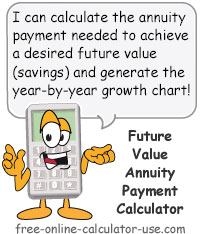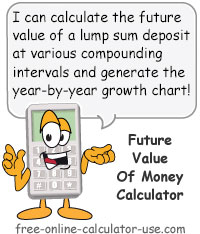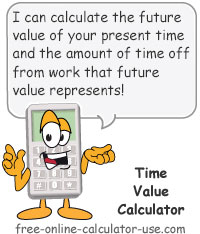IMPORTANT: Numeric entry fields must not contain dollar signs, percent signs, commas, spaces, etc. (only digits 0-9 and decimal points are allowed).
Click the Terms tab above for a more detailed description of each entry.
Step #1:
Select either Annuity Due or Ordinary Annuity from the drop-down menu.
Step #2:
Select the frequency of your deposits or payments, whichever the case.
Step #3:
Enter the deposit/payment amount that corresponds to the selected annuity type.
Step #4:
Enter the number of years you plan to make the regular deposits/payments.
Step #5:
Click the "Calculate FV of Annuity" button. This will display the calculated future value, the total of your deposits/payments, the total interest earned, and a year-to-year growth chart.





Follow me on any of the social media sites below and be among the first to get a sneak peek at the newest and coolest calculators that are being added or updated each month.